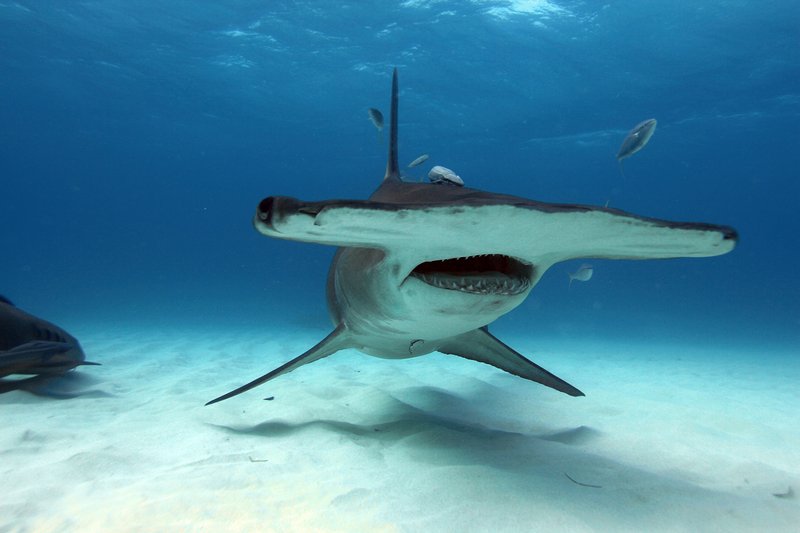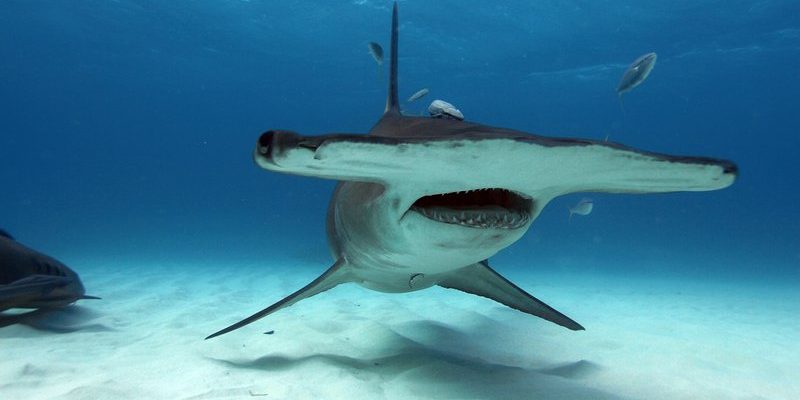
Imagine wandering through different ecosystems like a treasure hunter. Each habitat is a unique treasure chest full of life, where hammerhead sharks fit in like the perfect puzzle piece. The ocean isn’t just one big, blue blanket; it’s filled with nooks and crannies where these sharks thrive. So, let’s embark on this journey to discover where you can find hammerhead sharks swimming, hunting, and living their lives.
Types of Hammerhead Sharks
Before we get into the nitty-gritty of where hammerhead sharks are found, it’s important to know that there are several types of hammerhead sharks, each with its own preferences for habitat. The most common species include:
- Great Hammerhead: The largest of the hammerheads, often found in deeper waters.
- Scalloped Hammerhead: Prefers coastal areas and is often seen in schools.
- Smooth Hammerhead: Typically inhabits deeper waters and is less frequently observed.
- Winghead Hammerhead: Recognized for its unique head shape, usually found in shallow coastal waters.
The differences in these species lead to varying habitats. For instance, the great hammerhead is more likely to be spotted in deeper offshore waters, while schools of scalloped hammerheads thrive close to shore. Understanding these distinctions can help us better appreciate where these sharks swim and what they prefer.
Warm Tropical Waters
When you think of hammerhead sharks, warm tropical waters often come to mind. These sharks prefer water temperatures ranging from 20 to 30 degrees Celsius (68 to 86 degrees Fahrenheit). Areas like the Caribbean Sea, Gulf of Mexico, and the Pacific Ocean are prime spots for spotting hammerheads.
In these warm waters, hammerheads take advantage of abundant prey like schools of fish and cephalopods. They often gather in these locations to feed, especially during certain times of the year. Imagine a family reunion, but instead of catching up over coffee, these sharks are catching their favorite meals together! Schools of scalloped hammerheads are particularly known for gathering in numbers, creating a mesmerizing spectacle for divers and snorkelers.
You might also find hammerheads around coral reefs where they hunt for food and shelter. Coral reefs provide a rich ecosystem that attracts many smaller fish, making it a buffet for hammerheads.
Coastal Areas and Estuaries
You may be wondering, do hammerhead sharks stick to the open ocean? Not at all! Many hammerhead species love coastal areas, including bays and estuaries. These regions are often nurseries for juvenile sharks, providing a safe space away from larger predators. They thrive in these shallow waters, especially when they’re young and still growing.
Estuaries, where fresh and saltwater mix, are particularly rich in nutrients. The combination attracts a variety of prey, making it an ideal hunting ground for hungry hammerheads. These areas are like an all-you-can-eat buffet for them, where small fish and crustaceans are abundant.
In places like Florida’s bays or the coastal waters of Hawaii, hammerheads are often spotted swimming close to shore. Whether they’re hunting or learning to navigate, these coastal habitats are crucial for their development.
Open Ocean Zones
As we venture further from the shore, hammerhead sharks still make their presence known in the open ocean. While it might seem daunting to swim in deep blue waters, hammerheads are well-adapted to thrive here. The great hammerhead, for instance, is often found in deeper offshore waters, where they hunt larger fish and even other sharks.
In these vast waters, hammerheads can travel long distances in search of food. They can be migratory, moving to different areas depending on the season and food availability. It’s a bit like taking a road trip! They might journey from one warm spot to another, following the trails of their favorite prey.
Moreover, research has shown that hammerheads are known to dive deep, sometimes over 300 meters (1,000 feet), in search of cooler waters or to hunt specific prey. Their ability to adapt to various depths and temperatures makes them fascinating explorers of the oceans.
Behavior and Habitat Preferences
Understanding hammerhead sharks is more than just knowing where they swim; it’s also about their behavior and habitat preferences. You might see them alone or in schools, depending on the species and time of year.
For instance, social species like the scalloped hammerhead often swim in schools, which can help them hunt more effectively and avoid predators. Imagine them moving together in synchronized harmony, like a well-rehearsed dance! This social structure not only aids in hunting but also plays a role in reproduction, as they gather in larger numbers during mating season.
On the other hand, great hammerheads are often solitary, preferring to hunt alone. They usually seek out larger prey and can be found in deeper waters. Their hunting strategy and preference for solitude make them unique among their hammerhead cousins.
Threats to Hammerhead Habitats
It’s crucial to acknowledge that hammerhead sharks face numerous threats to their habitats. Overfishing, pollution, and habitat destruction all impact their populations. Hammerheads often fall victim to fishing nets and bait, as their unique shape makes them vulnerable during fishing practices.
Furthermore, coastal development leads to the destruction of essential habitats like mangroves and coral reefs. These areas serve as breeding grounds and nurseries for young hammerheads. Without healthy environments, their populations struggle to thrive.
Conservation efforts are underway globally to protect these magnificent creatures. Organizations are working to create marine protected areas (MPAs) where hammerhead sharks can recuperate and flourish without the pressures of fishing and habitat loss.
So, where are hammerhead sharks found? From the warm tropical waters of the Caribbean to the bustling coastal areas and even open ocean zones, these sharks have carved out their homes across a variety of habitats. Understanding their preferences and behaviors helps to highlight the importance of protecting their environments.
As we continue to learn about hammerhead sharks, it’s essential to remember their role in marine ecosystems and the challenges they face. By advocating for their conservation, we can help ensure that future generations can also marvel at these incredible creatures! So, next time you think of hammerhead sharks, picture them gliding gracefully through their diverse habitats, reminding us of the beauty and complexity of our oceans.

